Shopping for second-hand shoes in the resale market presents a remarkable chance to save significantly, with discounts potentially reaching 70% off premium footwear. To make the most of your shopping experience and ensure you make informed choices, it is essential to master the skills necessary for evaluating used shoes effectively. Your ability to discover high-quality second-hand footwear hinges on understanding key inspection criteria and recognizing reputable sources. Exercise caution with heavily worn footwear, as they can lead to foot issues due to the distinctive wear patterns created by the previous owner. This comprehensive guide will equip you with the knowledge to identify genuine designer shoes in impeccable condition while steering clear of common purchasing mistakes. With these techniques, you can curate an impressive shoe collection without breaking the bank.
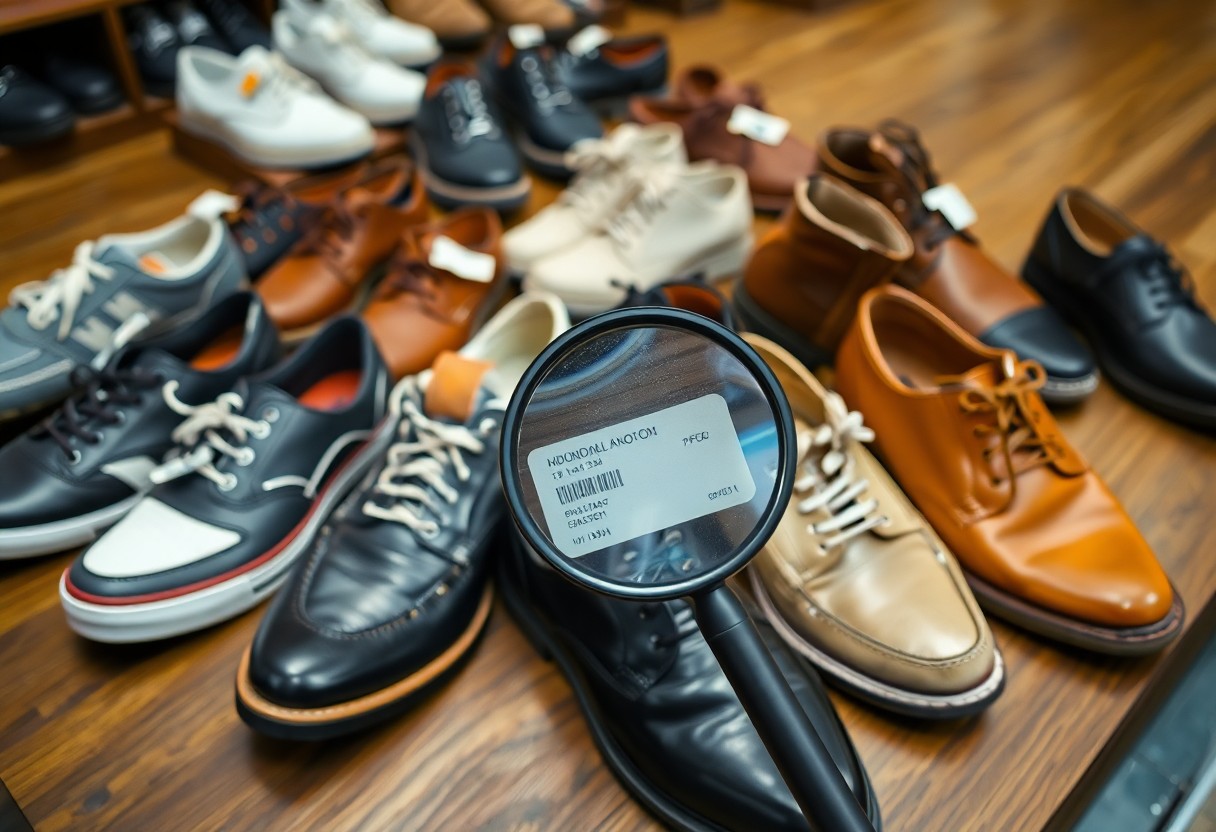
Discover the Extensive Variety of Second-Hand Shoe Options Available
The second-hand shoe market is brimming with a vast assortment of quality footwear, ranging from vintage classics to nearly new designer pieces. By familiarizing yourself with the different categories of shoes, you can improve your purchasing decisions and ensure that you select the best options that meet your style preferences. This understanding enables you to navigate the market more effectively, ultimately leading to smarter and more gratifying purchases that resonate with your unique fashion sense and practical needs.
| Casual Shoes | Sneakers, loafers, boat shoes |
| Formal Shoes | Oxford, derby, brogues |
| Athletic Shoes | Running, training, sports-specific |
| Designer Shoes | Luxury brands, limited editions |
| Vintage Shoes | Classic styles, rare finds |
Enjoy the Ideal Balance of Comfort and Style in Casual and Formal Shoe Selections
When exploring options for everyday wear, second-hand casual shoes provide an outstanding fusion of comfort and style at significantly reduced prices. The assortment available may range from gently-used loafers to exquisite vintage dress shoes, typically priced at 40-60% lower than their brand-new counterparts. This means you can elevate your wardrobe without compromising on quality or comfort, allowing you to articulate your personal style while adhering to your financial limits.
Assess Construction Quality and Material Integrity for Durable Footwear Choices
Even well-crafted shoes can exhibit signs of wear, making it vital to evaluate the sole construction, stitching quality, and material integrity before finalizing a purchase. Pay particular attention to shoes that feature Goodyear welted construction, as this method allows for resoling multiple times, significantly enhancing the longevity of the shoe. Additionally, it’s crucial to scrutinize the quality of leather and the interior lining. Look for minimal wear on the insole and heel counter, as these areas significantly impact comfort and fit. Generally, full-grain leather shoes provide exceptional durability and value in the second-hand market, making them a savvy investment.
Key Factors to Consider When Evaluating Second-Hand Shoes Prior to Purchase
Carefully scrutinizing essential elements such as material quality, construction methods, and overall condition is one of the most important steps in acquiring second-hand shoes. Your evaluation checklist should encompass the following crucial points:
- Original price and brand reputation
- Type of construction (preferably Goodyear welted)
- Authenticity of materials used
- Correct sizing
By methodically reviewing these aspects, you empower yourself to make knowledgeable decisions regarding the shoe’s overall value, ensuring that your purchase is both prudent and rewarding.
Understanding Wear Patterns and Assessing Overall Condition
Wear patterns can yield insightful information about the state of second-hand shoes. It is essential to inspect sole wear patterns, creases on the uppers, and heel degradation. Look for signs of proper maintenance, such as polish marks and clean welts, as these indicate that the shoes were well cared for by their previous owner. Additionally, examine the insole for excessive molding that reflects the previous owner’s foot shape. A pair in good condition should exhibit balanced wear across both shoes, suggesting even usage.
Analyzing Pricing for Maximum Value in Second-Hand Footwear
Now is the perfect opportunity to compare prices across various platforms. Generally, you can expect to pay 30-60% less than retail for gently used premium shoes. Ensure your budget accommodates any potential restoration expenses. It’s wise to investigate recent sales of similar items to accurately gauge market value.
Factors impacting price may include the prestige of the brand, the original retail price, the shoe’s age, and its current condition. Be sure to keep in mind:
- Current retail price of new models
- Cost of any necessary repairs
- Rarity of the style or color
- Evidence of authenticity
Step-by-Step Guide for Making Intelligent Second-Hand Shoe Purchases
To ensure a secure and fulfilling shopping experience when acquiring second-hand shoes, adhere to this systematic approach designed to help you avoid common pitfalls and ensure that you make well-informed decisions.
| 1. Research the brand and model | 2. Check seller ratings |
| 3. Request detailed photos | 4. Verify sizing information |
| 5. Inspect wear patterns | 6. Confirm the return policy |
The Importance of Accurate Measurements and Sizing for Comfort
Obtaining precise measurements is crucial to guarantee a proper fit in second-hand shoes. Knowing your foot length, width, and arch length is essential. Compare these measurements with the seller’s specifications for insole length and width. Additionally, allow for a 0.5-inch toe space in dress shoes to enhance comfort and ensure an optimal fit.
Methods for Verifying Authenticity of Premium Brand Shoes
When investing in premium brands, authentication is vital to protect against counterfeit products. Look for brand-specific markings, serial numbers, and quality of stitching. Compare the shoes with official product images available from the manufacturer to confirm authenticity.
A thorough authentication process should include examining the placement of the logo, material quality, and specific construction details. Request close-up images of the insole stamp, outsole, and any brand markings to verify legitimacy. Avoid listings featuring blurry or limited photographs, as these often indicate a lack of transparency from the seller.
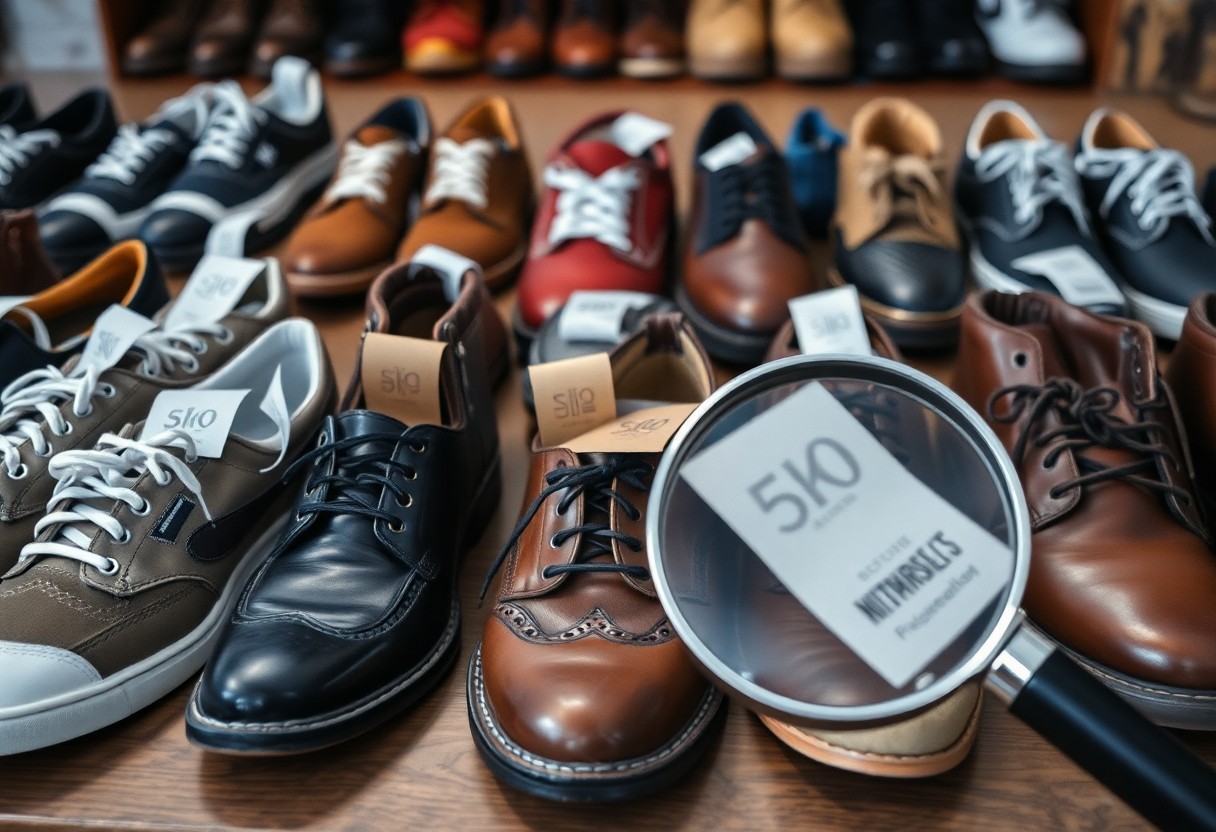
Finding Reliable Sources for Quality Second-Hand Shoes
Focus your search on reputable sources to uncover the finest second-hand shoes. You can explore thrift stores, online marketplaces, and specialized resale shops. Each option presents unique advantages, ranging from competitive pricing to authenticated products. Locally, consignment stores and vintage boutiques may yield valuable finds, while online platforms expand your access to a global market.
Leveraging Online Marketplaces for Second-Hand Shoe Opportunities
Online platforms such as eBay, Poshmark, and Depop shine as exceptional choices for sourcing second-hand shoes. These websites offer buyer protection and often feature detailed product descriptions. You may discover discounts of up to 70% off retail prices on premium brands. Remember to review seller ratings and feel free to request additional photographs if you have any concerns.
Advantages of Shopping at Specialty Resale Stores for Quality Footwear
The location where you shop can significantly affect your chances of finding high-quality second-hand shoes. Specialty resale stores feature pre-verified authentic items and often come with return policies for added peace of mind. These stores are typically found in major cities, and many also provide online shopping options.
A major benefit of specialty resale stores is their expert authentication process. Items purchased from these retailers come with guarantees of authenticity, and knowledgeable staff members can assist you in finding the perfect fit. Moreover, these stores usually clean and condition all shoes before sale, ensuring that you receive items in ready-to-wear condition.
Proven Techniques for Effective Second-Hand Shoe Shopping
When seeking the best second-hand shoes, it is essential to meticulously examine the wear patterns, condition of the soles, and leather quality. Inspect shoes in natural light to accurately assess their condition, evaluate flexibility, and confirm size accuracy. Recognizing signs of excessive wear or damage can aid you in avoiding costly mistakes during your purchasing journey.
Smart Negotiation Strategies for Securing Outstanding Deals
With price comparison data from various sources at your fingertips, you can make informed offers. Politely highlight minor defects, consider bundling multiple pairs for better deals, and be ready to walk away if the terms don’t meet your expectations. Your research on retail prices will serve as a solid foundation for effective negotiations.
Seasonal Buying Techniques for Maximizing Footwear Savings
Guidelines for seasonal shopping indicate that purchasing winter boots during the summer can yield discounts of 40-60%. Target dress shoes during post-holiday sales, and look for summer styles during winter clearance events to optimize your savings.
Seasonal shopping trends suggest that January and July present the best opportunities for securing deals on high-end shoes. During these months, premium brands can frequently be found at 30-50% below standard second-hand prices. Timing your purchases around major clearance events can lead to substantial savings and enhance your footwear collection.
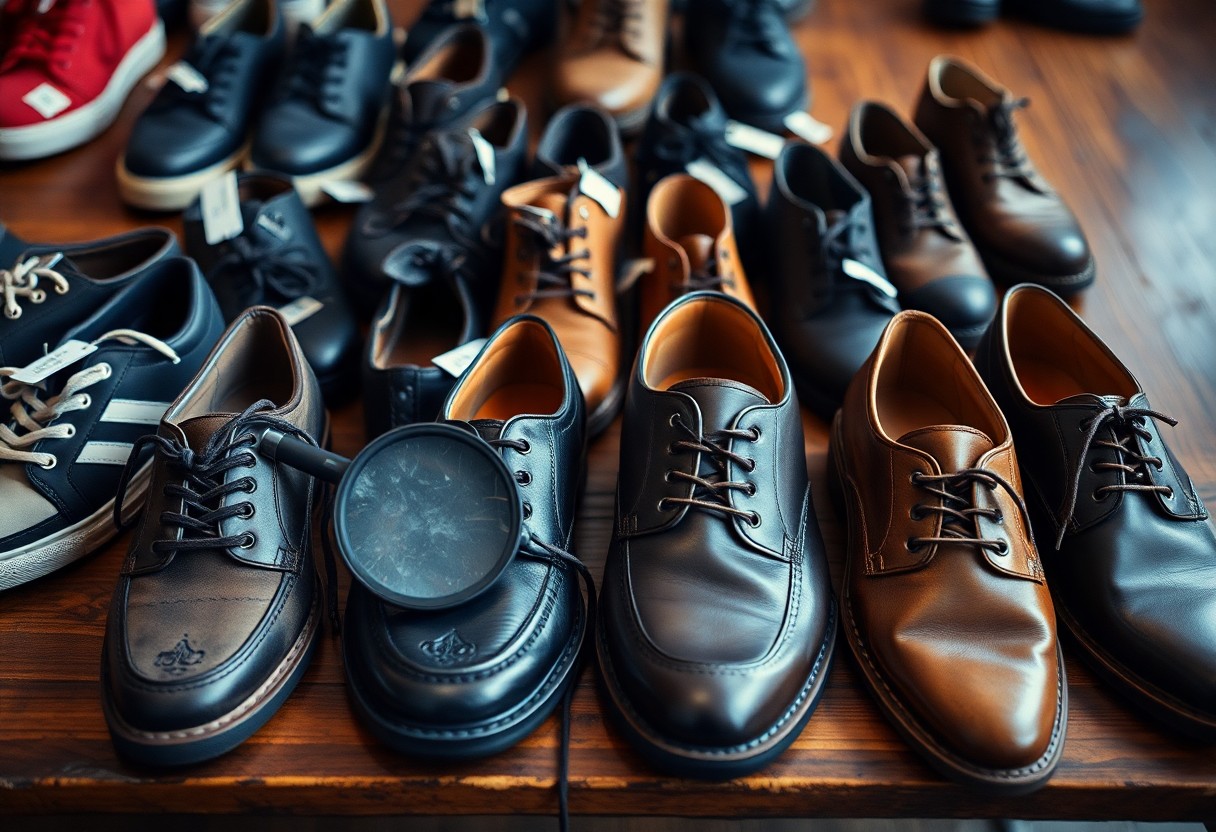
Weighing the Pros and Cons of Buying Second-Hand Shoes
Many consumers find that acquiring second-hand shoes is a smart and practical enhancement to their wardrobe. Opting for used footwear can lead to significant savings of up to 70% off retail prices, although it necessitates careful consideration of several factors to ensure a wise purchase.
1. Lower prices | Risk of hidden damage 2. Access to unique models | Possible hygiene issues 3. Reduced environmental impact | Shoes may be molded to another foot 4. Premium brands at affordable prices | Limited return options 5. Instant wear-in benefits | Potential for wear and tear 6. Vintage styles available | Uncertainty in sizing 7. Quality materials often used | Previous owner’s care habits 8. Cost-effective options | Authenticity concerns
Understanding the Benefits and Cost Savings of Second-Hand Shoes
The primary advantage of acquiring second-hand shoes lies in the financial savings. You can encounter high-end brands at 30-70% below retail prices, making premium footwear more accessible than ever before. This increased budget allows you to build a quality shoe collection more efficiently and effectively, enhancing your style without compromising on craftsmanship.
Addressing Potential Risks and Drawbacks of Used Footwear
Some concerns related to used shoes include hygiene issues and potential structural damage. Hidden problems, such as worn insoles or compromised support structures, may not be readily visible in photos or during initial inspections.
Such risks are amplified when considering heavily worn shoes. It’s essential to look for signs of excessive wear, assess the condition of the soles, and confirm the shoe’s authenticity before completing a purchase. A thorough inspection process can help you avoid costly mistakes and ensure a safe and rewarding shopping experience.
Your Roadmap to Success in Second-Hand Shoe Shopping
Your success in purchasing second-hand shoes ultimately hinges on your attention to crucial details and informed shopping decisions. By evaluating the shoe’s wear level, inspecting sole conditions, and selecting trustworthy sources such as specialized stores or reputable online platforms, you can uncover fantastic deals. Concentrate on choosing shoes that exhibit minimal wear and have not fully conformed to another person’s foot shape. Keeping these insightful tips in mind and being prepared to resell if necessary will significantly boost your chances of discovering high-quality second-hand shoes that fit well and deliver excellent value for your investment.
Common Questions About Buying Second-Hand Shoes
How can I effectively assess the condition of second-hand shoes before purchasing?
Begin by inspecting the soles, as they reveal the extent of wear. Pay particular attention to the heel tips and toe regions for any signs of wear patterns. Examine the leather upper for deep creases or damage, and check the interior for molded footprints or worn insoles. Shoes in good condition should display minimal wear marks, intact stitching, and no separation between the sole and upper components.
Where can I find the best quality second-hand shoes?
Seek out great deals on specialized websites like Abbot’s Shoes and Leffot’s pre-owned section. Online marketplaces such as eBay, Styleforum Buy & Sell, and The Shoe Snob marketplace feature reliable sellers, clear photos, and buyer protection. Local thrift stores can also yield impressive finds, although their selection may vary significantly.
What sizing factors should I consider when buying used shoes?
Select shoes that are close to your regular size, as used footwear has typically conformed to the previous owner’s feet. Verify if the seller provides precise measurements of insole length and width. Favor shoes that exhibit minimal wear, as heavily-used pairs may have stretched or adapted to a different foot shape. Be prepared to resell if the fit proves unsatisfactory, even if the deal appears advantageous.
The Article Buyer’s guide to purchasing high-quality second-hand shoes tips for finding the best deals appeared first on My Shoes Finder
The Article Second-Hand Shoes: Tips for Finding Quality Deals First Appeared ON
: https://ad4sc.com
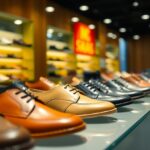

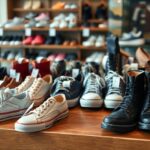


Comments are closed